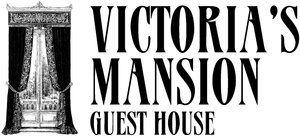Our Neighbourhood’s History
In the Beginning
At the end of the 18th Century, John Simcoe divided Toronto (or York, as he preferred it) among his Loyalist cronies. The forested land that would become this section of Gloucester straddled narrow 100-acre park lots were granted to provincial secretary William Jarvis and commissioner general John McGill.
Simcoe envisioned a social class of landed gentry akin to the upper crust of England that could live on rental income alone and saw the northern gifts as “an inducement to build a House in the town & remuneration for its expense.” But his instant aristocracy was not cut out for generosity or a sense of obligation towards his community.
Running Into Debts
Captain McGill quickly sold 60 acres of his land to Chief Justice John Elmsley, busy amassing his own 8,000 acres and rumoured to have paid as little as a gallon of rum for substantial farm lots. Within 20 years, Jarvis, inefficient and petty-minded, was drowning in debt-including an astounding £1,800 in unpaid wages for his clerk.
In an attempt at family salvation, his real estate holdings were transferred to his “most lovely boy”, Samuel, who unfortunately inherited his father’s business sense as well as his morals. Sam’s sojourn as chief superintendent of the Department of Indian Affairs resulted in a commission of inquiry that found his private bank account and his official one closely linked. He was suspended from office in 1845. Before he was fired, he had hired architect John Howard (whose fees he never got around to paying) to prepare the park lot, 660 feet wide, with Jarvis Street at its centre, for subdivision and sale.
New Owners
Eleven acres extending down the west side of Jarvis from Bloor to below Wellesley were purchased by William Cawthra, son of an apothecary who’d expanded into riches. In 1856, the city paid him £1,050 for the road allowance enabling Gloucester to join with Jarvis, but Cawthra continued to live in town.
As Church Street was extended north to Bloor, as Gloucester grew from Yonge eastward and as houses crept across John McGill’s old parkland, the long, thin strip of Cawthra’s Jarvis Street land stood empty. Toronto citizens gratefully used it as the local Lacrosse Grounds.
Notable Residents
The middle classes arrived on the north side of Gloucester in the 1860s.
- Andrew McCord, who had held the post city chamberlain since William Lyon Mackenzie’s time as mayor (despite the fact that Mackenzie found the man “personally obnoxious”), built a home here.
- James Aikins, secretary of state in John A. Macdonald’s cabinet, made a brief appearance.
- Celebrated society portrait painter George Berthon lived on this side.
- Landscape artist, Marmaduke Matthews in the years immediately before he built Wychwood Park.
